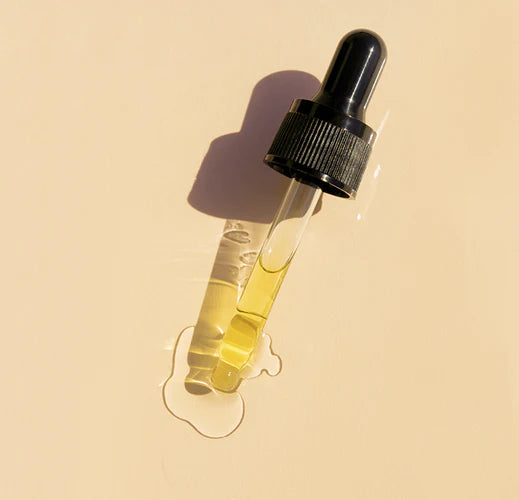WHAT IS IT?
As the winter nights close in, temperatures drop and biting winds pick up, it’s imperative to keep your skin hydrated, protected, and glowing. OSKIA products contain lots of fabulous ingredients which target each of these aims, but this month we’re focussing on just one – Niacinamide. Niacinamide is what our body converts niacin into when metabolised, so while we look at the skin benefits of niacinamide, Thomasina Miers has chosen a great source of niacin for our recipe of the month. Niacinamide is a fantastic all-round skin care ingredient, in that it acts in several ways to have a real benefit on your skin. It belongs to the family of the B vitamins, being one of the principal forms of Vitamin B3 (the other is nicotinic acid). Internally, it acts as a precursor to co-enzymes (facilitators of enzymatic reactions) essential for numerous metabolic pathways. These co-enzymes play several crucial functions but in particular they play a key role in metabolism of glucose, cellular energy production and synthesis of lipids. Typically, the levels of these co-enzymes decrease with age, but studies have shown that the topical application of Niacinamide can reverse this decline.
Niacin is therefore a key vitamin required for healthy skin condition. It was recognised in the early 20th century as the vitamin that prevents pellegra, an epidemic disease with cutaneous lesions – think severely scaly skin and often mistaken for leprosy - and was originally named vitamin PP for pellegra-preventive. Historically it’s also been associated with the treatment of acne. As described below, it’s been shown to have positive effects on skin hydration, increased production of fibroblasts (which helps reduce the signs of wrinkles and fine lines) and has been shown to even skin tone, helping attain a glowing complexion. It’s also extremely important for more general health, not just your skin. As mentioned, it helps the release of energy from carbohydrates, fats and proteins so they can be used by the body. It’s also involved in controlling blood sugar levels and maintaining the proper functioning of the nervous and digestive systems.
SOURCES
Niacin is essential for our diet and is contained in many foodstuffs. Good sources include liver, tuna, chicken, peanuts and sweet potatoes – the last of which Thomasina Miers has incorporated into our recipe of the month, Sweet Potato and Feta Frittatas.
HOW DOES TOPICAL NIACINAMIDE BENEFIT THE SKIN?
- As a topical application, Oskia uses Niacinamide. As already mentioned, Niacinamide is a fabulous ‘all-rounder’ with numerous scientifically proven benefits when used in a skincare regime.
- Improvement of skin moisturisation. Skin softness, suppleness and skin hydration are related to the barrier properties of the horny layer. It’s known that several lipids such as fatty acids and ceramides are critical for the structural and functional integrity of the stratum corneum. The skin barrier function can be assessed by transepidermal water loss (TEWL) measurements. A study conducted in 2000 by Tanno et al showed that a solution incorporating 2% niacinamide reduced the TEWL – the amount of hydration lost through the skin - by 24% in 4 weeks. The means the skin is retaining moisture better and therefore appearing softer and plumper. At the same, free fatty acids and ceramides, which again play a big part in skin hydration and softness, were boosted by 67% and 34% respectively.
- Improvement in the appearance of ageing skin. Skin ageing is characterised by major skin changes like reduced skin elasticity, poorer structure and appearance of wrinkles. An important factor is the gradual loss of collagen and elastin fibers synthesised in fibroblasts. A recommended strategy in preventing skin ageing is to reduce collagen breakdown, while increasing fibroblasts. Studies with human fibroblasts undertaken by Bissett et al in 2003 showed that niacinamide stimulates new fibroblasts by 20% and collagen secretion by 54%, helping increase elasticity and firmness and reducing fine lines.
- Helps impart a more even-looking skin tone. Extended exposure to sun light is a main reason for hyperpigmentation. Melanocytes in deeper skin layers produce melanosomes that contain the pigment melanin. These are then released to keratinocytes that move upwards to the upper epidermis. Niacinamide does not inhibit the production of melanin but it was shown in 2002 that niacinamide inhibits the transfer of the melanosomes to the surrounding keratinocytes by up to 68%. The scientists used a keratinocyte/ melanocyte co-culture model. A clinical trial with volunteers confirmed the skin lightening activity. They had applied a skin cream with 5% niacinamide for 8 weeks. Age spots around the eye and cheek were significantly reduced and a balanced, more even complexion achieved.




